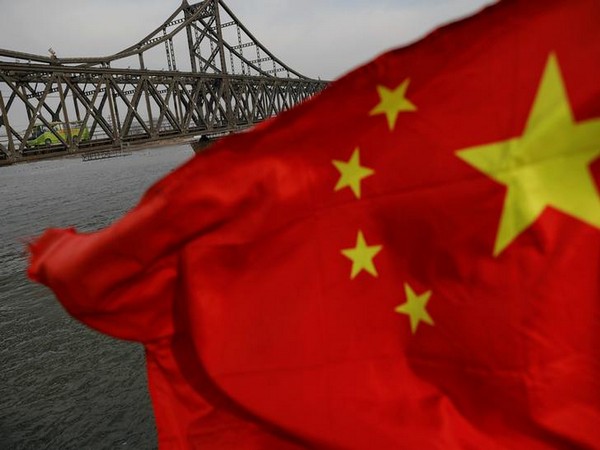Armed with increasing capital resources, a resurgent China is undertaking an ambitious expansion through infrastructure investments globally. The recipients of this capital which takes the form of both debt and equity are mostly capital starved underdeveloped countries in Asia and Africa. The presence of a diverse set of political, economic, cultural and legal factors in these countries makes it challenging for the global multilaterals to fulfill their funding requirements. This is the void which China is seeking to fill through an intricate deployment of its trademark debt diplomacy under Belt and Road Initiative (BRI).
The strategy is implemented through making inroads into under-developed countries by manipulating their political leaderships while excluding the competitors through favorable terms. However, what follows the initial securing of infrastructure projects is a tactical series eventually leading to trapping of these nations in now famous “Chinese debt trap”. A recent study conducted by researchers from the World Bank, Harvard Kennedy school, AidData and Kiel institute for the World Economy found that China spent $240 billion between 2008 and 2021 to bailout 22 countries which faced difficulty in making repayments of Chinese loans.
Though there have been several instances of Beijing acting according to this playbook in under-developed countries, the details of these investment agreements are never made public. In Africa, China seems to be involved in almost every type of infrastructure development, including dams, railways, ports and telecommunication networks. However, negative experiences of some of these countries expose the role of investment agreements in entrapping them. One such case is of Tanzania where Chinese malpractices were used to gain dominance in securing infrastructure projects. The Chinese terms & conditions for the construction of Bagamoyo Port project have reportedly led to the cancellation of the agreement signed by the Tanzanian government with China Merchants Holdings lnternational in 2013. According to some reports, it was the exploitative nature of the ‘terms & conditions’ which led to falling apart of the agreement as Tanzanian government felt like losing control of the port.
Terms of the 99-years lease included conditions like complete Chinese monopoly on construction and operation of the port, logistics facilities, as well as industrial park with full rights over revenue. Apart from it, the agreement also prevented further development of Dar-es-Salaam or any other port in Tanzania, to ensure supremacy of Bagamoyo port. It also provided for linking Bagamoyo Port with TAZARA (Tanzania Zambia Railway) with complete control over its operation. This meant exclusive Chinese control over transportation of Copper from Zambia by TAZARA to Bagamoyo Port, for further transportation to China without any hindrance. Though Tanzania started negotiations for the Bagamoyo Port project with China a decade back, successive Tanzanian governments had found it difficult to accept the Chinese conditions in the agreement. This led to the suspension of the project agreement by the John Magafuli government in 2020.
However, Beijing was believed to be pressuring the Tanzanian authorities to restart the negotiations. Experiences of other African nations are similar when it comes to exploitative terms imposed by China. In November 2022, Kenya had revealed some of the ‘terms & conditions’ of the 473-km Standard Gauge Railway (SGR) project (connecting port city of Mombasa with Nairobi), bringing dealings of the previous Kenyan governments with China under scanner. The project will give sweeping powers to its Chinese lenders, including requiring arbitration of any dispute to be held only in Beijing. Apart from it, Kenya was bound to establish an inland container deport in Nairobi with a mandatory customs clearance facility favoring China, along with a ‘Railway Development Fund’ to be solely used to repay loans of the project. This would require Kenya to dedicate more than 40 per cent of the proceeds from the SGR to repay Chinese loans.
Even while spending rest of the proceeds of the project, Kenya would have to prioritize purchase of Chinese goods. Pradeep Mehta, Secretary General, CUTS International (a leading public policy body with branches in Africa) explained, “Through the Belt and Road Initiative, China is investing heavily in the East African region to reshape the political and economic narrative. It would end up promoting a China-centric global economic and political order. This strategy would also be tied up with China’s maritime ambitions.” “In its strategy, Beijing seeks to influence critical global supply chains, diverting the flow of international trade via critical sea lanes and seaports. Here, the East African Community (EAC) has become a vital entry point for China into the African continent,” Mehta said, adding, “Positioned alongside the Indian Ocean region, the EAC lies in direct vicinity to a maritime route that is vital for global trade and security. The Maritime Silk Road Initiative (MSRI), the sea route element of the BRI that connects China with Africa, is critical for China’s geopolitical ambitions.”
“Having access to seaports, railway lines, power stations and inter-regional highways in the EAC increases China’s strategic economic and political reach. Much of this assistance is through loaning thus mortgaging the assets to Chinese investors and creating huge debts for the countries of the EAC region.” Following the bitter experience of their neighbors, many African countries are getting increasingly wary of relying on Chinese investments. Many countries under BRI have also started demanding renegotiation of the loan terms in various projects. According to an estimate provided by the USbased Rodium Group, the loan terms of 40 BRI projects were renegotiated in 2020 and 2021. The coming decade will be a crucial test for Beijing’s debt diplomacy.

